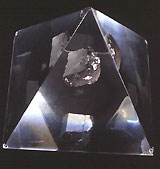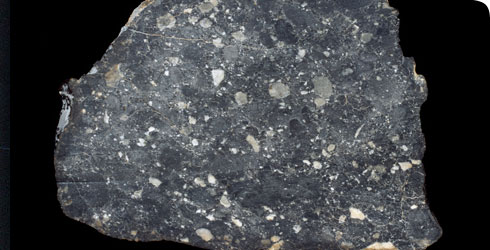Lunar samples and meteorites
During the Apollo missions to the Moon, around 380kg of lunar rock was brought back to Earth. Only after this was analysed did scientists realise that there were samples of the Moon already on Earth.
The Apollo missions

This Moon rock specimen, collected on the Apollo 16 mission in 1972, is on display at the Natural History Museum.
In the late 1960s and early 1970s NASA attempted 17 missions related to the exploration of the Moon, known as the Apollo missions. Of these, 6 successfully landed on the Moon's surface.
In addition to putting a man on the Moon, one of the most important scientific goals was to collect and bring back samples of Moon rock.
The lunar material brought back has told us some unexpected things about our closest neighbour in space.
What did they find?
No one really knew what to expect when the first lunar rocks were returned to Earth in 1969 and when they were first analysed in the Johnson Space Centre in Houston the findings were quite surprising.
They found that lunar rock differed from terrestrial rock (Earth rock). It contained very little water or other elements usually lost during heating, and was rich in elements created at high temperatures (refractory elements). This suggested that the Moon had once been heated to very high temperatures.
The lunar rocks were also much older than expected, the oldest being 4.4 billion years old. This is much older than the oldest Earth rocks, which are around 3.8 billion years old. This is because the Moon's volcanoes have stopped spewing new lava to the surface and there is no wind or water to erode the surface, whereas the Earth's surface is continually changing. Little has changed on the Moon's surface for billions of years.
Lunar meteorites
It was only after the Apollo lunar samples were analysed that we realised that samples of the Moon were already present on Earth. They had fallen naturally as meteorites. It is thought that asteroids that collided with the Moon ejected bits of its surface into space. This debris was captured by Earth's gravity, and fell through our atmosphere to the surface.
Lunar meteorites are, however, very rare. There are only around 80 lunar meteorites known on Earth, although the number rises slowly each year as new lunar meteorites are identified.
Toolbox

Our fossil insect collection includes Rhyniognatha hirsti, the world's oldest fossil insect, dating back some 400 million years.
